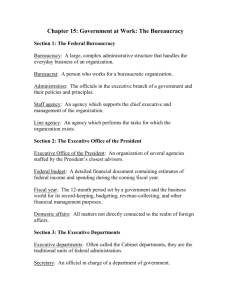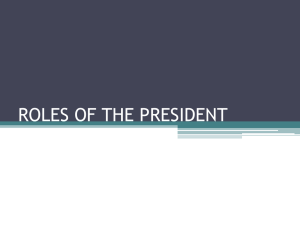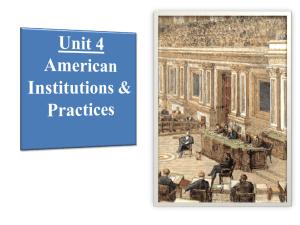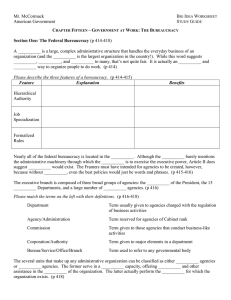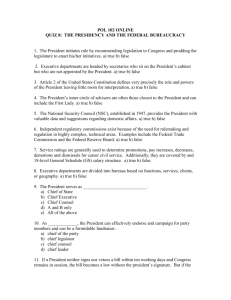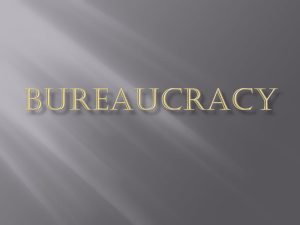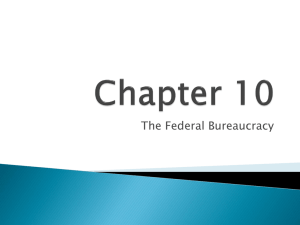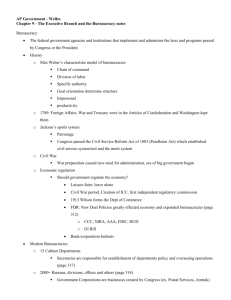The_Growth_of_the_Federal_Bureaucracy_
advertisement
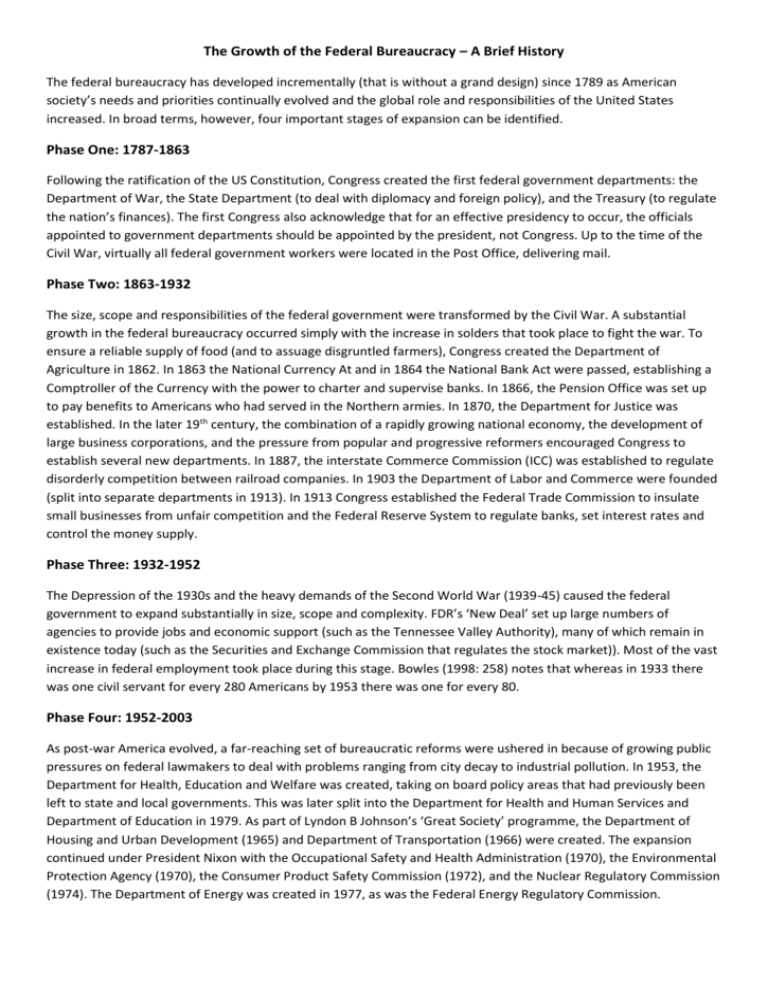
The Growth of the Federal Bureaucracy – A Brief History The federal bureaucracy has developed incrementally (that is without a grand design) since 1789 as American society’s needs and priorities continually evolved and the global role and responsibilities of the United States increased. In broad terms, however, four important stages of expansion can be identified. Phase One: 1787-1863 Following the ratification of the US Constitution, Congress created the first federal government departments: the Department of War, the State Department (to deal with diplomacy and foreign policy), and the Treasury (to regulate the nation’s finances). The first Congress also acknowledge that for an effective presidency to occur, the officials appointed to government departments should be appointed by the president, not Congress. Up to the time of the Civil War, virtually all federal government workers were located in the Post Office, delivering mail. Phase Two: 1863-1932 The size, scope and responsibilities of the federal government were transformed by the Civil War. A substantial growth in the federal bureaucracy occurred simply with the increase in solders that took place to fight the war. To ensure a reliable supply of food (and to assuage disgruntled farmers), Congress created the Department of Agriculture in 1862. In 1863 the National Currency At and in 1864 the National Bank Act were passed, establishing a Comptroller of the Currency with the power to charter and supervise banks. In 1866, the Pension Office was set up to pay benefits to Americans who had served in the Northern armies. In 1870, the Department for Justice was established. In the later 19th century, the combination of a rapidly growing national economy, the development of large business corporations, and the pressure from popular and progressive reformers encouraged Congress to establish several new departments. In 1887, the interstate Commerce Commission (ICC) was established to regulate disorderly competition between railroad companies. In 1903 the Department of Labor and Commerce were founded (split into separate departments in 1913). In 1913 Congress established the Federal Trade Commission to insulate small businesses from unfair competition and the Federal Reserve System to regulate banks, set interest rates and control the money supply. Phase Three: 1932-1952 The Depression of the 1930s and the heavy demands of the Second World War (1939-45) caused the federal government to expand substantially in size, scope and complexity. FDR’s ‘New Deal’ set up large numbers of agencies to provide jobs and economic support (such as the Tennessee Valley Authority), many of which remain in existence today (such as the Securities and Exchange Commission that regulates the stock market)). Most of the vast increase in federal employment took place during this stage. Bowles (1998: 258) notes that whereas in 1933 there was one civil servant for every 280 Americans by 1953 there was one for every 80. Phase Four: 1952-2003 As post-war America evolved, a far-reaching set of bureaucratic reforms were ushered in because of growing public pressures on federal lawmakers to deal with problems ranging from city decay to industrial pollution. In 1953, the Department for Health, Education and Welfare was created, taking on board policy areas that had previously been left to state and local governments. This was later split into the Department for Health and Human Services and Department of Education in 1979. As part of Lyndon B Johnson’s ‘Great Society’ programme, the Department of Housing and Urban Development (1965) and Department of Transportation (1966) were created. The expansion continued under President Nixon with the Occupational Safety and Health Administration (1970), the Environmental Protection Agency (1970), the Consumer Product Safety Commission (1972), and the Nuclear Regulatory Commission (1974). The Department of Energy was created in 1977, as was the Federal Energy Regulatory Commission.
